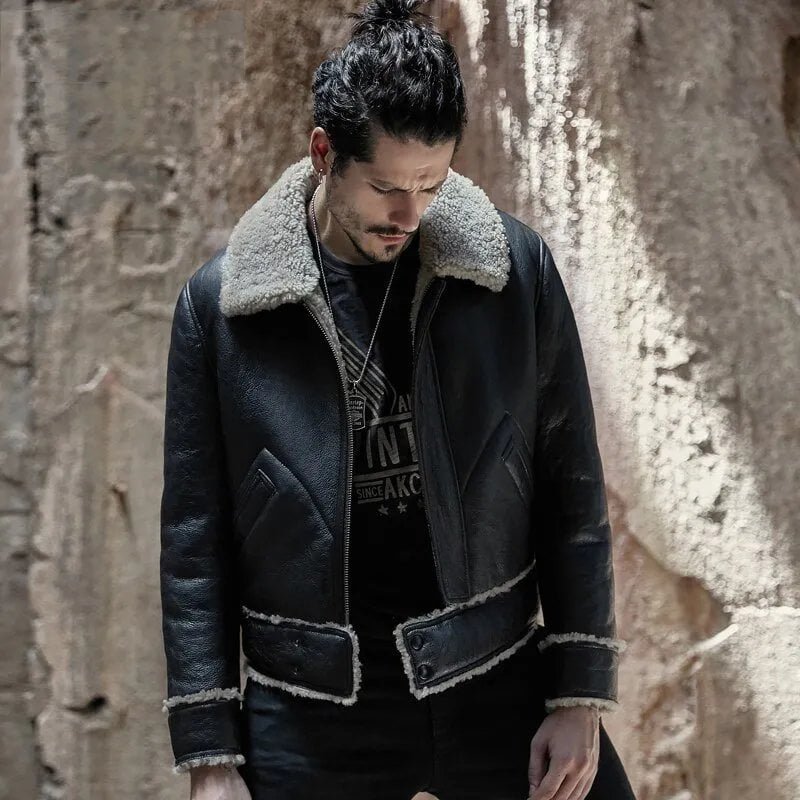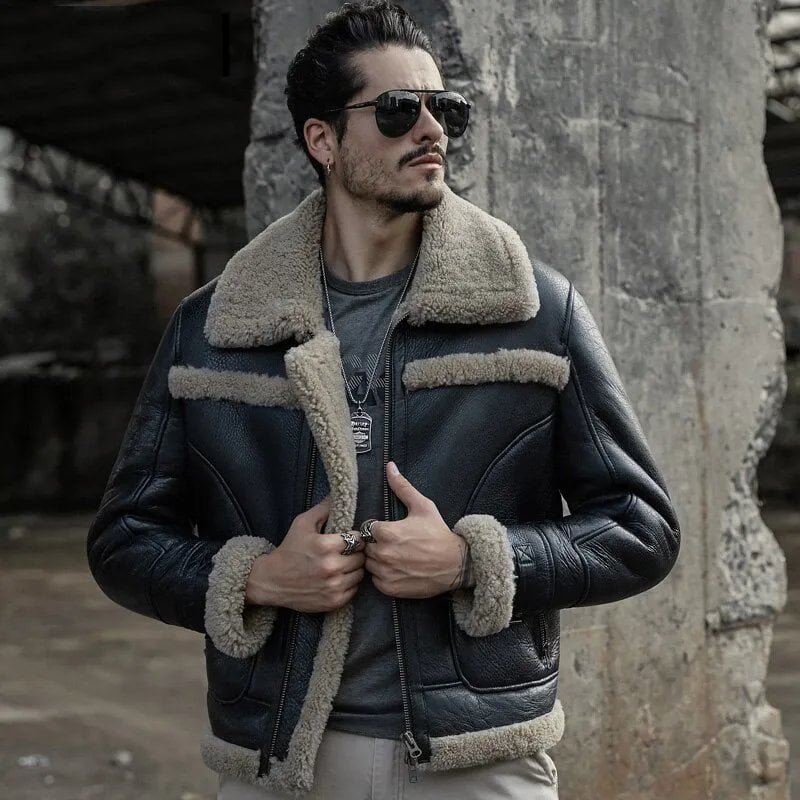How sheepskin jacket was made ?
The Origins and History of Sheepskin Jackets
The origins of sheepskin jackets date back to ancient civilizations, where various cultures recognized the practical benefits of sheepskin for clothing. Among the earliest known uses, the nomadic tribes of Mongolia and Siberia utilized sheepskin for its insulating properties, offering protection against the harsh climates. These early adopters sewed together raw sheepskin to create rudimentary garments, effectively laying the foundation for what would become a timeless piece of attire.
As centuries passed, the use of sheepskin spread across continents. In medieval Europe, sheepskin jackets became synonymous with comfort and durability, favored by both peasants and nobility. The craftsmanship involved in making these garments evolved significantly; artisans perfected techniques for tanning and sewing, ensuring durability and softness. Particularly during the Viking era, sheepskin was not only functional but also a mark of status and wealth.

Fast forward to the 20th century, sheepskin jackets gained iconic status during World War II. Bomber jackets, crafted from sheepskin, were integral to military uniforms, beloved for their ability to provide warmth at high altitudes. Their adoption by pilots and military personnel cemented their place in popular culture, translating military functionality into civilian fashion.
The post-war era witnessed the rise of sheepskin jackets within mainstream fashion. The 1960s and 1970s saw a surge in their popularity, influenced by countercultural movements and celebrities who embraced the rugged yet sophisticated look. Figures such as Steve McQueen and James Dean were often seen sporting sheepskin jackets, making them emblematic of rebellion and cool sophistication.
Despite the passage of time, many traditional techniques have been preserved. Modern sheepskin jackets often incorporate age-old methods of tanning and stitching, ensuring that each jacket retains the quality and charm of its historical counterparts. Even today, these jackets represent a blend of tradition and modernity, embodying the evolution from practical necessity to high fashion.

Sourcing and Preparing Sheepskin
The process of sourcing high-quality sheepskin begins with careful attention to sheep farming. Sheep breeds such as Merino, Icelandic, and British Suffolk are particularly favored for their superior hides and fleece. These breeds are known for producing thick, soft, and durable wool, making them ideal for crafting sheepskin jackets. The journey from farm to fashion necessitates stringent farming practices to ensure the fleece’s optimal quality.
Ethical and sustainable farming practices are paramount in the early stages of sheepskin production. Farmers prioritize the welfare of the sheep, ensuring they are raised in humane conditions with ample space and access to natural pastures. This not only promotes better animal health but also benefits the quality of the wool. Organic farming practices, including the avoidance of harmful chemicals and pesticides, further contribute to the sustainability of the sheepskin industry.
The initial preparation of sheepskin involves multiple carefully orchestrated steps. The process begins with shearing, where the fleece is skillfully removed without harming the sheep. Next, the raw fleece undergoes cleaning to remove any impurities such as dirt, grease, and lanolin. This step is crucial for maintaining the wool’s natural texture and quality. Following the cleaning is the curing process, which involves treating the sheepskin with salt to preserve it and prevent any decay. Curing is an essential step that stabilizes the sheepskin, preparing it for further processing and ensuring its durability.
Sustainable and ethical practices play a significant role in each phase of sheepskin preparation. From responsible farming to eco-friendly cleaning and curing methods, every step is meticulously designed to minimize environmental impact while enhancing the product’s excellence. This dedication to quality and ethics ensures that the final sheepskin not only meets high fashion standards but also aligns with contemporary values of sustainability and responsibility in fashion production.

The Tanning and Processing of Sheepskin
The transformation of raw sheepskin into a luxurious, durable material suitable for fashion requires a meticulous series of tanning and processing stages. Tanning, the first phase, stabilizes the sheepskin to prevent decay and decomposition. There are two primary tanning methods utilized: vegetable tanning and chrome tanning, each with distinct qualities and implications.
Vegetable tanning employs natural tannins extracted from organic substances, such as tree bark, leaves, and even fruits. This method is esteemed for its environmentally friendly nature, yielding leather that ages gracefully over time, developing a unique patina. However, it is a lengthy and labor-intensive process, often resulting in stiffer leather compared to chrome tanning.
Conversely, chrome tanning utilizes chromium sulfate as a tanning agent, expediting the process significantly. While it leads to a more pliable and softer sheepskin, ready to absorb dyes and deliver a consistent finish, environmental concerns about the chemicals involved persist. Despite these challenges, chrome tanning remains popular in the industry due to its efficiency and ability to produce versatile, high-quality leather.
Post-tanning, the sheepskin undergoes several refining steps to enhance its texture and durability. Softening is crucial, involving mechanical actions or the application of emulsions to ensure the sheepskin attains a silky feel. Stretching follows, using specialized machinery to evenly stretch the sheepskin, augmenting its strength and flexibility.
Dyeing is another essential phase, where vibrant colors are infused into the leather, tailored to fashion design requirements. Modern advances in dye technology have revolutionized this step, offering diverse and resilient color options while minimizing environmental impact.
Technological advancements have spurred significant innovations in the sheepskin tanning and processing industry. Automated systems now streamline numerous functions, leading to consistent quality and increased production efficiency. Eco-friendly initiatives, including the adoption of sustainable tannins and water recycling processes, reflect the industry’s commitment to reducing its ecological footprint.
Through meticulous tanning and processing, sheepskin is transformed from a humble byproduct into a coveted fashion material, demonstrating the profound craftsmanship and evolving technology at its core.






